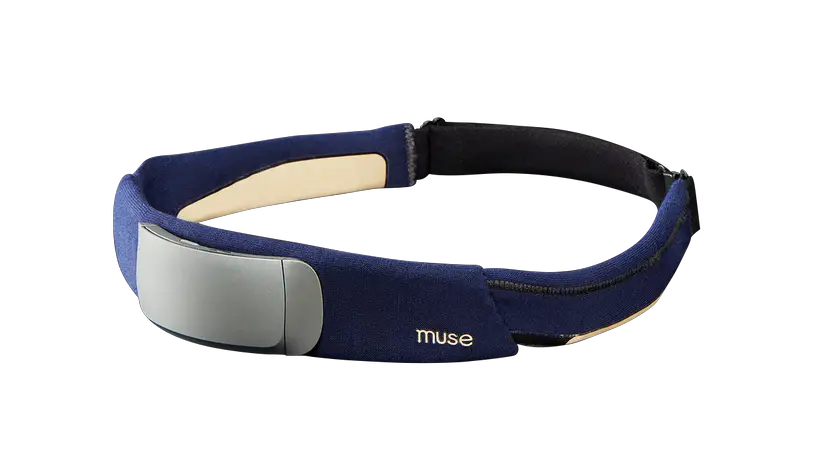Meditation apps have exploded in popularity, promising stress relief, better focus, and improved mental well-being. Calm is one of the most well-known names in this space, offering guided meditations, sleep stories, and relaxing sounds. But is it really worth the price?
Meanwhile, brain-training technology like the Muse headband offers an entirely different approach—using real-time neurofeedback to train your brain in mindfulness and focus. Instead of just listening to pre-recorded meditations, Muse actually shows you how your brain is responding to meditation and helps you improve over time.
So, which one is better? Should you stick to a simple app like Calm, or is investing in neurofeedback with Muse a smarter choice? In this in-depth comparison, we’ll break down the differences and show you why Muse is the superior option for truly upgrading your mind.
What is The Calm App?
Calm is a popular meditation app designed to help users relax, sleep better, and reduce stress. It features:
- Guided meditations on topics like anxiety, focus, and self-esteem.
- Sleep stories narrated by celebrities to help users fall asleep.
- Breathing exercises to promote relaxation.
- Soothing nature sounds and background music.
While Calm can be helpful for beginners, it has some major drawbacks. First, most of its features can be found for free on YouTube or Spotify. There are thousands of free guided meditations and sleep sounds available online, making Calm’s expensive subscription questionable.
Additionally, Calm doesn’t offer any way to measure your progress. Meditation is supposed to improve brain function, but with Calm, you have no way of knowing if you’re actually getting better at it.
What is the Muse App & Headband?
Muse takes meditation and focus training to an entirely new level by using real-time neurofeedback. It’s not just an app—it’s a high-tech wearable device that monitors brain activity and helps users improve their mindfulness in a measurable way.

How Does Muse Work?
- EEG Sensors – Muse is a headband equipped with EEG (electroencephalography) sensors that track brain activity.
- Real-Time Feedback – The device translates brainwaves into soundscapes that adjust based on your level of calmness.
- Personalized Training – Over time, Muse helps users recognize when they’re distracted and guides them back to a meditative state.
Key Features of Muse:
- Measurable Progress – Unlike Calm, which just plays audio, Muse tracks your brain’s response to meditation.
- Neurofeedback Technology – Provides real-time feedback, training your mind to stay focused.
- Multiple Meditation Modes – Includes breath, heart rate, and body movement tracking.
- Scientifically Validated – Used in clinical research to enhance cognitive performance and stress management.

Watch this video to see Calm vs. Muse review.
Calm vs. Muse Review – How It Works
➡ Discover How Muse Can Upgrade Your Mind
Use the code HEALTHYWILDFREE at checkout to save 15% off your order!
Why Neurofeedback is Superior to Guided Meditation
Most meditation apps, including Calm, are passive—they guide you through relaxation techniques but don’t show you whether you’re actually improving. Muse, on the other hand, actively trains your brain using neurofeedback, which is backed by science.
The Science Behind Neurofeedback
Neurofeedback helps train the brain to stay in a calm, focused state by reinforcing positive brainwave patterns. It has been used for decades in cognitive therapy and has been shown to:
- Improve focus and attention span.
- Reduce symptoms of anxiety and depression.
- Help with sleep disorders and stress management.
By using Muse, you’re not just hoping your meditation is working—you’re seeing the results in real-time and making measurable progress.
The Cost Factor: Is Calm Worth It?
One of the biggest drawbacks of Calm is its subscription cost. The app charges:
- $69.99 per year for full access to its library.
- $399.99 for a lifetime membership.
This is a steep price considering you can find similar content for free on YouTube, Spotify, or other meditation apps.
Meanwhile, Muse requires an upfront investment for the headband, but it’s a one-time purchase that offers lifelong benefits without recurring fees. Instead of paying every year for Calm, you can make a single investment in Muse and actually improve your brain function over time.
Comparing Effectiveness: Calm vs. Muse
| Feature | Calm App | Muse Handband |
| Guided Meditation | ✅ Yes | ✅ Yes |
| Sleep Stories | ✅ Yes | ❌ No |
| Tracks Brainwaves | ❌ No | ✅ Yes |
| Provide Real-time Feedback | ❌ No | ✅ Yes |
| Scientifically Validated | ❌ No | ✅ Yes |
| One Time Purchase | ❌ No | ✅ Yes |
Final Verdict: Which One Should You Choose?
If you just want a library of guided meditations and sleep stories, Calm might seem like a decent option—but you can get the same content for free elsewhere.

If you’re serious about improving your brain function, reducing stress, and training your mind, Muse is the clear winner. It’s a one-time investment that actually measures and enhances your meditation practice using real-time neurofeedback.
For those who want real results—not just relaxing background sounds—Muse is the better choice.

Get the Best Deal on Muse:
If you’re ready to take your meditation to the next level, click here to get your Muse headband today:
➡ Discover How Muse Can Upgrade Your Mind
Use the code HEALTHYWILDFREE at checkout to save 15% off your order!





